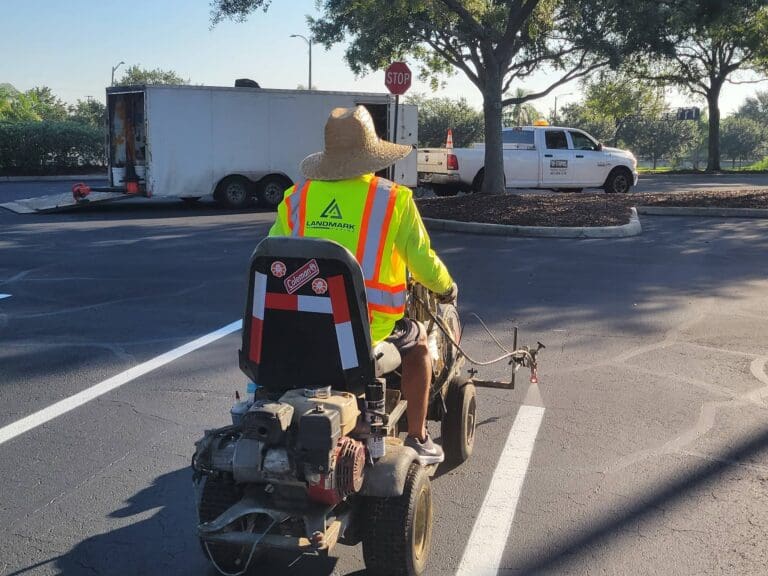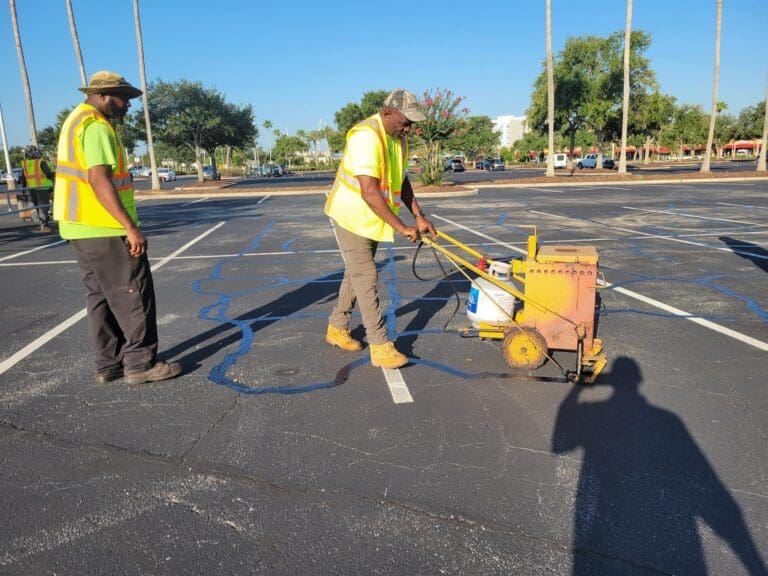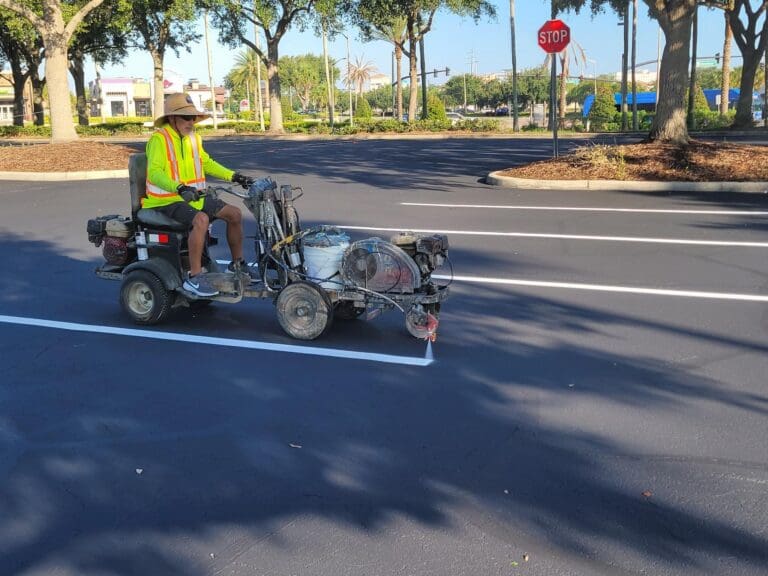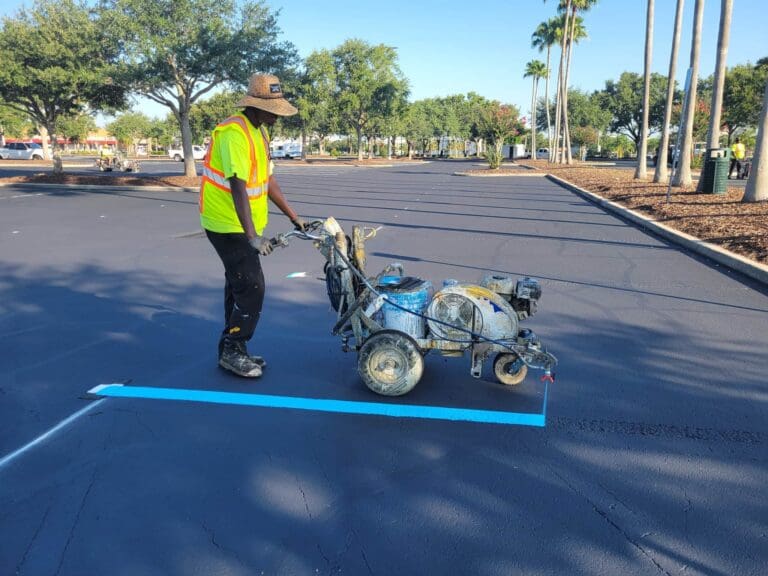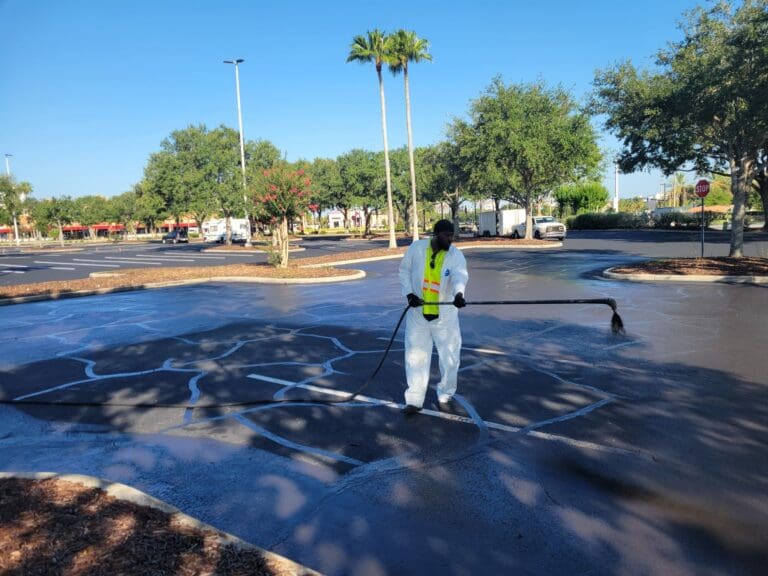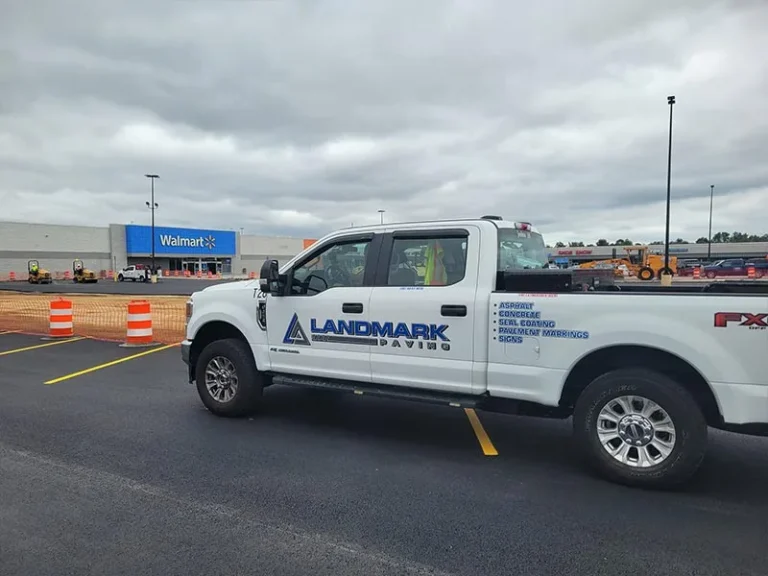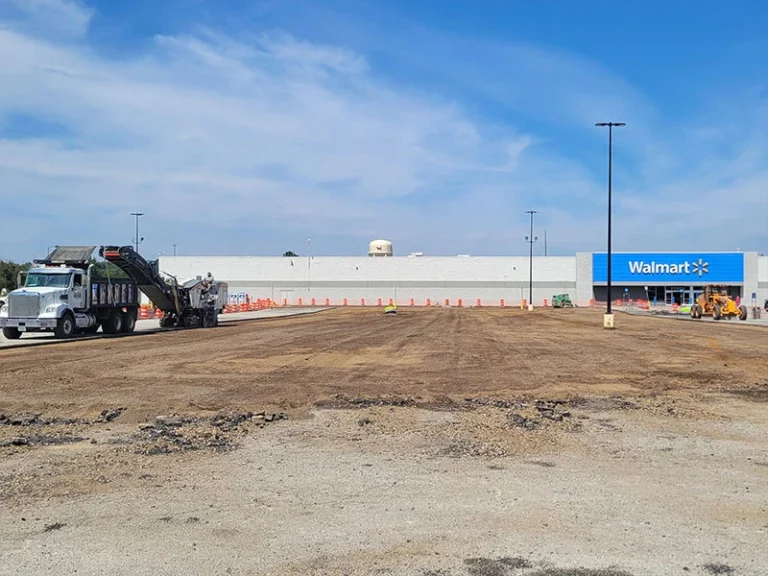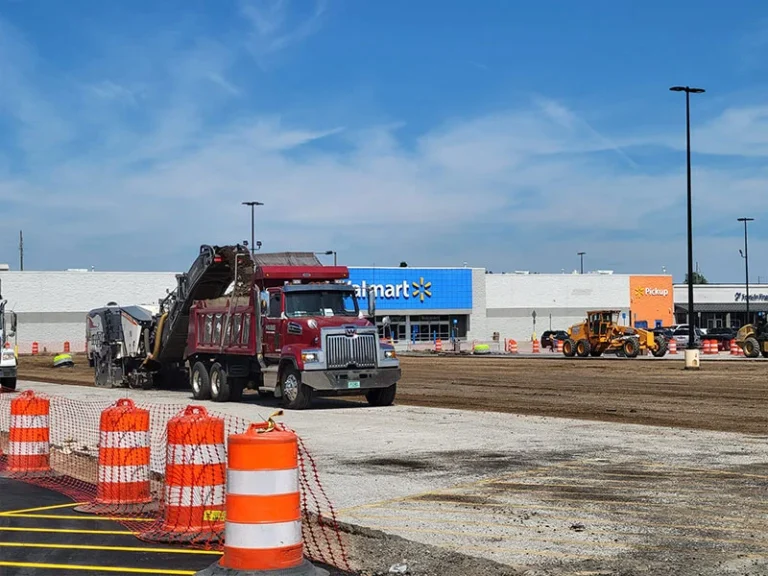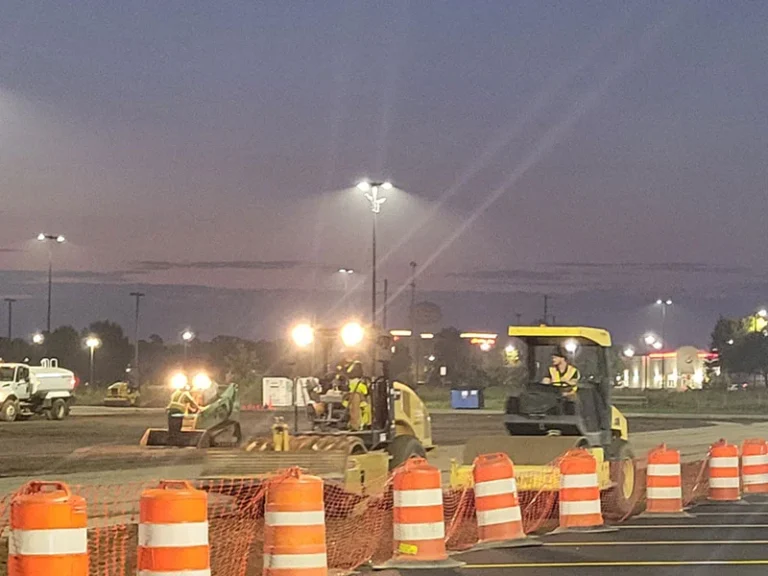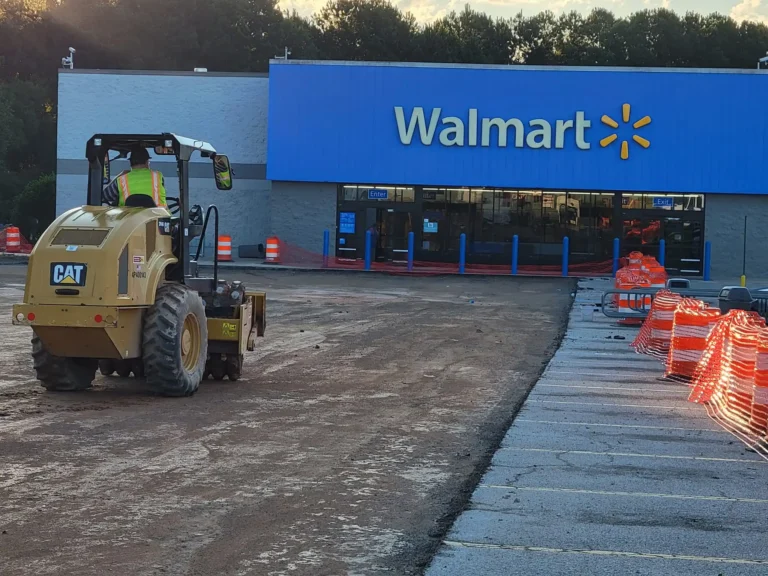
Ensure Your Parking Lot Meets ADA Requirements in Cincinnati
Every business, from shopping centers to medical offices, is required to provide accessible parking spaces that meet ADA parking requirements. When these standards aren’t met, property owners can face costly fines, legal action, and even loss of customer trust.
At Cincinnati Asphalt, we make ADA compliance simple. Our experienced team designs, stripes, and maintains parking lots that fully align with the Americans with Disabilities Act (ADA) as well as Ohio and local Cincinnati codes.
Get a Free Estimate for Your ADA Compliance Project
What Are ADA Parking Requirements?
Understanding the ADA Law and Why It Matters
The ADA sets national standards for accessibility. Under ADA Title III, all public and commercial properties must provide accessible parking spaces that meet federal guidelines.
These standards define everything from width and slope to sign height and visibility, ensuring that parking areas are safe and usable for everyone. Beyond being the law, ADA compliance also demonstrates care for every customer, employee, and visitor who enters your property.
In Ohio, local enforcement agencies, including those in Cincinnati, may have additional requirements that expand upon federal standards. Keeping up with these changing codes is critical for full compliance.
How Many Accessible Spaces Do You Need?
The number of accessible parking spaces required depends on the total number of parking spaces in your lot. Here is a ratio-based guideline to help determine your compliance needs:
Total Parking Spaces in Lot
Minimum Required Accessible Spaces
1-25
1
26-50
2
51-75
3
76-100
3
101-150
4
151-200
6
201-300
7
301-400
8
401-500
9
501-1000
2% of the total spaces
1001+
20 + 1 per 100 spaces over 1000
Note: At least one of every six accessible spaces must be van-accessible, featuring either an 11-foot width or a shared 8-foot access aisle.
Facilities like medical offices, shopping centers, and government buildings may require additional accessible spaces due to higher visitor traffic or specific public-use purposes.
Ohio & Cincinnati-Specific Handicap Parking Space Requirements
While ADA guidelines establish the baseline, Ohio and local Cincinnati codes provide additional details.
Key local requirements include:
- Van spaces that are at least 11 feet wide with a 5-foot walkway, or an 8-foot space with an 8-foot walkway.
- Standard car spaces that are at least 8 feet wide with a 5-foot walkway next to it, or an 8-foot space with an 8-foot walkway.
- Walkways that must be at least 5 feet wide, running the full length of the parking space.
Visit our blog to read our complete list of Cincinnati-specific requirements for handicap parking spaces.
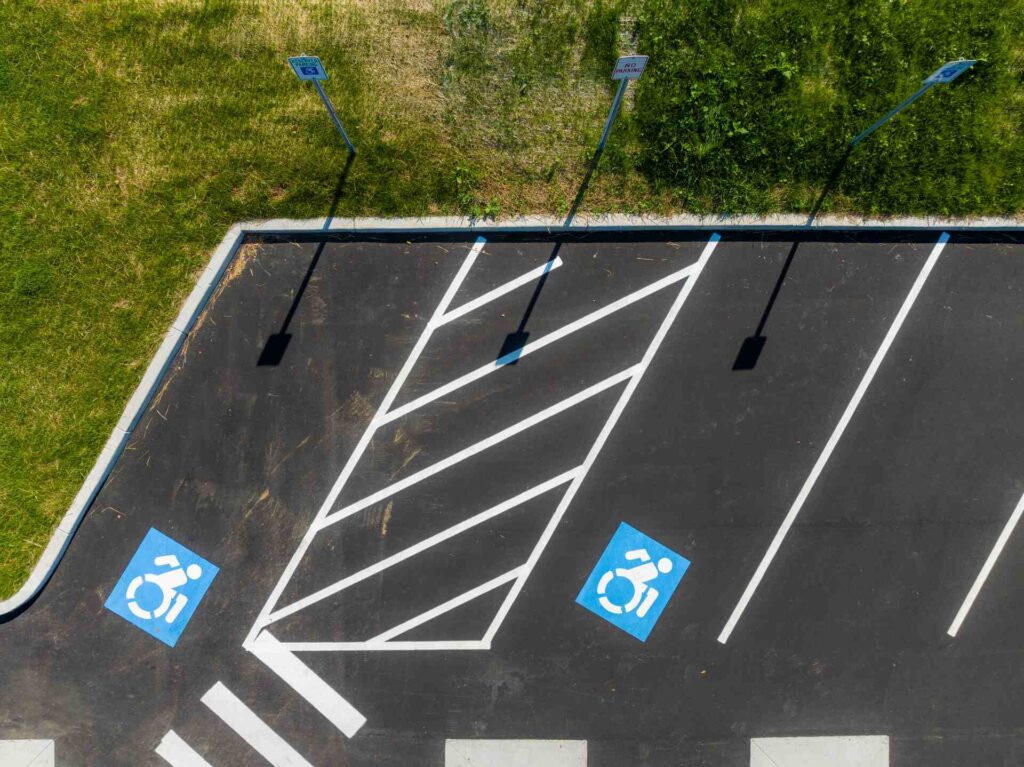
ADA-Compliant Parking Lot Services
ADA Parking Lot Striping & Markings
ADA-compliant parking lot paving and line striping is a crucial part of your parking lot’s accessibility. Not only does it ensure that accessible spaces are clearly marked, but it also helps your business avoid potential fines and lawsuits. It’s recommended to re-stripe every 2–3 years with durable, reflective paint.
Accessible Signage Installation
Proper signage is another essential part of ADA compliance. Signage must be clearly visible and meet height and reflectivity standards. At Cincinnati Asphalt, we provide signage installation, from handicap parking signs to van-accessible markers. Signs must be placed at a minimum height of 60 inches for easy visibility.
Curb Ramps, Walkways & Concrete Work
Maintaining an ADA-compliant walkway is just as important as parking spaces. Whether you need new curb ramps, repaired walkways, or updated sidewalks, Cincinnati Asphalt makes sure all areas meet ADA specifications. This includes curb ramps that meet the required 2% slope for smooth transitions.
Pavement Repairs & Grading
Proper grading and pavement maintenance are essential to maintaining ADA compliance. Uneven pavement can create hazards for pedestrians, especially those with disabilities, making it critical to keep your parking lot smooth and leveled.
Full ADA Compliance Review for Commercial Businesses in Cincinnati
Full ADA parking lot compliance requires a comprehensive assessment of your entire parking lot and surrounding areas. At Cincinnati Asphalt, we offer site evaluations so that your property meets all ADA requirements before, during, and after any construction or resurfacing.
Maintaining ADA Parking Lot Compliance
Ongoing Inspections & Maintenance
ADA parking lot striping, signage, and curb ramps can wear out over time, especially due to weather, which may cause your property to fall out of compliance. In addition to regular maintenance, we recommend re-striping every 2–3 years or sooner.
Documentation & Proof of Compliance
Another key aspect of maintaining ADA compliance is keeping thorough records. Documentation can serve as protection in the event of an inspection or legal inquiry, proving that your property is regularly maintained and in line with codes.
When to Repaint or Reassess
ADA parking lot compliance is not a one-time effort. It requires periodic reassessment to address changing needs or conditions and prevent fines. You should reassess your parking lot compliance every few years after re-striping or sealcoating.
Why ADA Compliance Matters for Your Business
Maintaining ADA compliance provides several long-term benefits to your business:
- Enhanced Accessibility
ADA compliance ensures that your parking lot and facilities are accessible to everyone, regardless of physical ability. This creates a more inclusive environment and helps you serve a broader range of customers.
- Legal Protection
By adhering to ADA guidelines, you avoid the risk of fines and lawsuits. Noncompliance can lead to expensive legal fees, not to mention damage to your business’s reputation. ADA violations can also result in federal fines and local penalties.
- Positive Reputation
Businesses that prioritize accessibility are seen as inclusive and community-focused, which improves your brand image. Clients, customers, and employees are more likely to trust a business that demonstrates care for everyone.
- Customer Experience
An accessible parking lot creates a safer and more user-friendly environment for all visitors. This leads to a better overall experience, increasing customer satisfaction and loyalty. A welcoming atmosphere can drive more traffic and repeat business.
- Long-Term Savings
Investing in regular maintenance and compliance can save you from costly rework or potential fines. Proactively maintaining your ADA-compliant parking lot also reduces the risk of lawsuits and other legal issues.
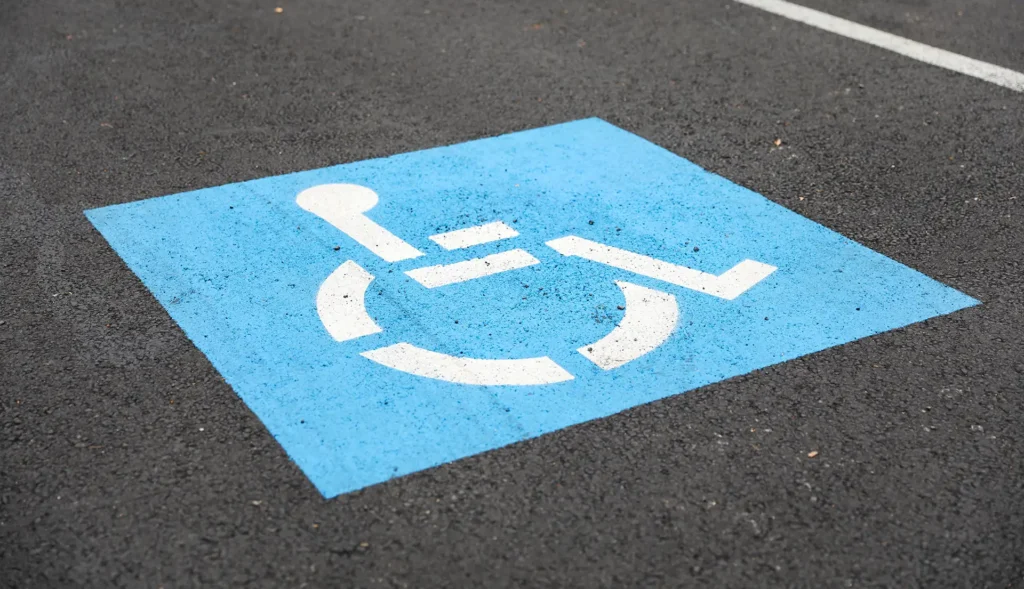
Partner with an Experienced ADA Compliance Contractor in Greater Cincinnati
Cincinnati Asphalt has the knowledge and expertise to handle all your ADA parking lot compliance needs. We work closely with our clients, helping them achieve full compliance across Greater Cincinnati. So, why choose Cincinnati Asphalt for your ADA parking needs?
- Local expertise: We are well-versed in Ohio and Cincinnati-specific regulations.
- Full-service compliance: We handle ADA striping, signage installation, pavement repairs, and curb ramp construction.
- Reliable and professional: Our team offers high-quality, efficient, and timely service with minimal disruption to your daily operations.
Ready to get started? Contact Cincinnati Asphalt today to schedule your free ADA compliance assessment and ensure your parking lot meets the highest standards for accessibility.
Frequently Asked Questions About ADA Parking Requirements
What does ADA parking mean?
ADA parking refers to parking spaces that meet the requirements set by the Americans with Disabilities Act (ADA). These spaces must be properly sized, clearly marked, and located in an accessible area for those with disabilities.
How many handicap parking spaces do I need?
The ADA provides a ratio system to determine how many accessible spaces are needed. For example, for every 25 total spaces, at least one must be designated for accessible parking. Larger lots require additional accessible spaces based on the same ratio.
What are Ohio’s ADA parking requirements?
Proper maintenance for asphalt pavement can be accomplished in several ways. This can include routine seal coating every 2 to 4 years, filling cracks as they begin forming, promptly cleaning spills, and addressing any drainage issues immediately.
Additionally, make it a point to have regular professional inspections done. Professional issues may appear minor on the surface, but can quickly snowball into a major problem.
Who installs ADA parking signs and markings?
Professional ADA compliance contractors, like Cincinnati Asphalt, handle the installation of ADA-compliant parking signs, line striping, and other accessibility markings. These contractors are familiar with local codes and ensure the parking lot meets all federal and state regulations.
What happens if I’m not ADA compliant?
Failure to comply with ADA parking requirements can result in legal consequences, including fines, lawsuits, and even negative publicity. Not only does noncompliance create accessibility barriers for individuals with disabilities, but it can also affect your business’s reputation and customer satisfaction.
How often should I repaint or restripe my lot?
It’s recommended to repaint and restrip your parking lot every 2–3 years. Regular maintenance ensures that your lot remains compliant and safe for all users. Any significant changes in your parking layout or after resurfacing should prompt a reassessment and re-striping.
Our Service Areas
Our Office:
- Harrison



